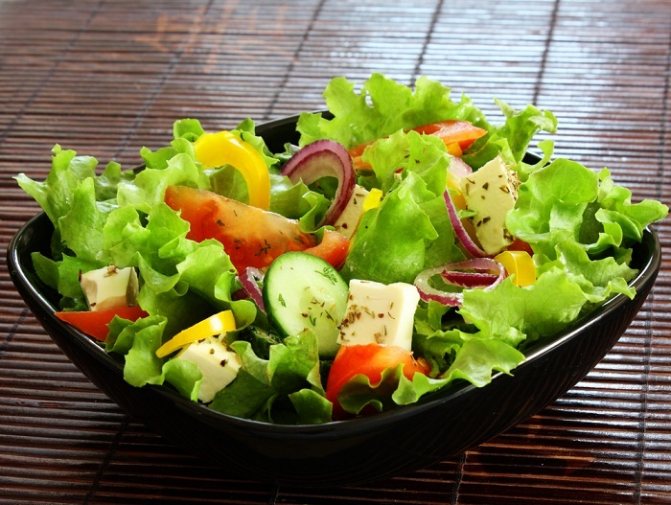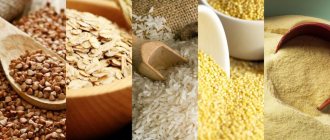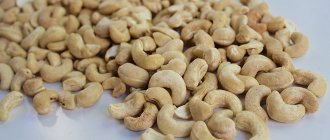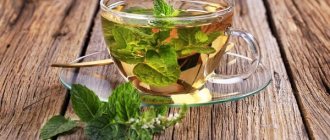A nursing mother is forced to be very responsible when choosing food so as not to harm her newborn baby. It is for safety reasons that girls often completely exclude vegetables from their diet during breastfeeding. Let's figure out which vegetables you should give up, which vegetables are allowed during breastfeeding, and how best to prepare them.
Benefits for nursing mothers
Vegetables are an integral part of a well-structured diet. They contain a large amount of minerals and vitamins, and legumes also contain complete vegetable protein. It is a storehouse of fiber, which regulates intestinal function and prevents constipation, obesity and intestinal cancer.
Finding sources of vitamins and microelements to improve the quality of mother's milk and prevent vitamin deficiency is especially important in winter, when local vegetables become almost the only choice. After all, fruits from the supermarket are not safe and of high quality. To protect fruits from spoilage and extend the sales period, they are treated with chemical agents that can negatively affect the health of mother and baby.
Minerals in vegetables (potassium, magnesium, calcium, zinc, etc.) not only participate in the formation of tissues, such as bone, but also regulate water balance in the body, preventing swelling and dehydration.
Why does a nursing mother need to eat vegetables?
As you know, the composition of breast milk directly depends on the mother’s nutrition, which is why the diet should not only be safe for the baby, but also balanced. The speed of recovery of her body, exhausted by long-term childbearing, also depends on how varied and at the same time healthy a woman eats during this period.
It is not only possible for a nursing mother to eat vegetables, but also necessary; excluding them from the diet can harm the health of both mother and child.
Why you shouldn't give up vegetables:
- The meager nutrition of a nursing mother deprives the baby of vital substances, minerals and trace elements;
- Refusal of vegetables means refusal of a large amount of vitamins that are so necessary for the body during lactation;
- Vegetables are an indispensable “helper” in the absorption of protein, as well as iron;
- Vegetables are a natural laxative; if you completely avoid them, a woman will suffer from constipation;
- If you completely give up vegetables, you will have to replace them with more high-calorie side dishes, and this will sooner or later lead to a woman gaining excess weight.
Note!
A nursing mother is recommended to eat about 400 grams of vegetables per day.
Read also: Nutrition for a nursing mother: main myths
Effect on lactation
Some vegetables during breastfeeding can increase lactation:
- carrot;
- onion;
- zucchini
Various decoctions are prepared from them to stimulate milk production.
An infusion of carrots that promotes lactation has proven itself well. To prepare it, grate 1 medium carrot on a fine grater. The result should be approximately 3-4 tbsp. l. vegetable mush. Pour in one glass of boiled milk. Leave for 30 minutes. If the child does not have allergies, you can add a drop of honey.
Beet
Nursing mothers know that their menu should not contain red vegetables and fruits. But this does not apply to beets. During breastfeeding, beets should be included in a woman’s diet.
This vegetable is recommended for those who suffer from anemia or are simply weakened, due to its high iron content. In addition, beets are recommended for frequent constipation. The slight laxative effect of beets is due to the fiber, betaine, and organic acids it contains. Beets also contain iodine, which makes them useful for thyroid problems. The rejuvenating effect of this vegetable is explained by the presence of B vitamins and antioxidants.
During breastfeeding, beets are introduced into a woman’s diet gradually, starting with small quantities. In the first months of feeding, it can only be consumed boiled. Later, you can add stewed beets to the menu, for example with carrots.
Most useful
What vegetables can nursing mothers eat? Doctors advise choosing only seasonal ones, grown in your area, which you are used to eating before giving birth. A woman can try them already in the first days after the baby is born.
The most useful and safest:
- Potatoes are rich in thiamine, especially when boiled or baked. But you should give up fried potatoes during breastfeeding. A nursing mother can eat up to 4 medium potatoes every day.
- Carrots, due to their high vitamin A content, have a beneficial effect on vision. In the first months after childbirth, it is better to eat this vegetable in small quantities and boiled.
- Zucchini: vitamin A and copper in its composition can relieve swelling. 1 medium-sized vegetable will be enough for mom per day.
- Broccoli and cauliflower, as a rule, do not cause increased gas formation, so mothers can eat them from the first days of a newborn’s life. It is recommended to eat cabbage boiled, stewed or steamed. Folic acid, which is part of these representatives of the Cruciferous family, stimulates the development of the child’s brain. In some cases, they can still cause bloating in the baby, so they should be present in the mother’s diet in small quantities.
- Pumpkin is a source of vitamins B, C, T and K. Regular consumption will help the mother cope with edema and even lose excess weight gained during pregnancy.
Allowed vegetables during breastfeeding also include: Chinese cabbage, corn (with caution), young green beans, lettuce, fresh parsley and dill.
Table of vegetables for breastfeeding
| Name of healthy vegetable allowed for consumption during breastfeeding | Main action |
| Potato | Normalization of metabolism, saturation of the body with thiamine, phosphorus, potassium, removal of salts. |
| Cauliflower, broccoli | Improving mood, stabilizing the central nervous system, cardiovascular system, kidneys, strengthening bones, preventing cancer. |
| Carrot | Normalization of visual function, improvement of the appearance of the skin, assistance in the normal development of the baby. |
| Beet | Stimulation of intestinal peristalsis, relief of inflammatory processes, reduction of pain. |
| Zucchini | Cleansing the body of toxic elements, improving the structure of the dermis, nail plates, hair, strengthening protective properties. |
| Pumpkin | Elimination of swelling, thanks to the removal of excess fluid from the body, normalization of the gastrointestinal tract. |
Vegetables are the healthiest food after childbirth. They are able to bring variety to the menu, accelerate the growth and formation of all systems in a child, and restore the female body. However, you need to follow your pediatrician's recommendations. Some foods should not be eaten during the 1st week of lactation to avoid the development of negative consequences.
Requiring caution
In the first (1-3) months of a child’s life, it is better to avoid some vegetables. Next, they are introduced into the menu of a nursing mother with caution, monitoring the condition of the baby. It may also happen that a woman will start eating something from the list below almost immediately after giving birth and no problems will arise.
- Cucumbers have a positive effect on the thyroid gland. But you can consume no more than three of them per day, and only if the baby does not suffer from increased gas production.
- Beets contain significant amounts of calcium and iodine. Helps cope with digestive disorders in mothers and babies. But you can eat it provided that the child does not suffer from allergies.
- Tomatoes are rich in iron, potassium and zinc, so they are considered an excellent preventive measure for osteoporosis and anemia. But it is better to introduce them into the diet when the child is one month old. If your baby is prone to food allergies, choose yellow varieties rather than red ones. Tomatoes can cause sensitization symptoms in a child. Therefore, breastfeeding mothers should not eat more than half of one fruit per day.
- Sweet pepper strengthens capillaries due to its calcium and rutin content. You can try it for the first time when the baby is one or two months old. Give preference to green or yellow fruits.
- Eggplants are rich in pectin and help normalize metabolism in the body of a nursing mother. But due to the presence of corned beef in their composition, it is better to postpone acquaintance for a while. Before preparing delicious vegetable dishes, it is recommended to soak the eggplants in salted water.
- Celery will solve the problem of increased gas formation in infants, saturate the body of mother and baby with vitamins A, B and E. But it can cause allergies, especially if there is a family history of allergic diseases. In this case, it is advisable to postpone the introduction of celery into the diet until the baby is three months old.
General information
Vegetables are an essential source of vitamins and plant fibers in every person’s diet. And even more so, a woman needs them during lactation. Therefore, it can be argued that most vegetables can not only be consumed during breastfeeding, but they should be components of the mother’s daily diet.
Vegetables can be eaten raw, boiled, or baked in the oven. In addition to the fact that raw vegetables contain many vitamins, they contain dietary fiber, which is a natural laxative. Eating vegetables while breastfeeding can protect a woman and child from constipation.
Of course, it is preferable to eat raw vegetables in the summer when they naturally ripen. In winter, it is better to eat frozen vegetables. They are perfectly preserved and contain essential vitamins.
Vegetables offered by supermarkets during the cold season are usually treated with special chemicals for transportation and long-term storage. In addition, they are often grown in greenhouses, greenhouses, where chemicals are used. Chemically treated vegetables will not benefit either the woman or her child.
In order to avoid the occurrence of allergic reactions, vegetables are introduced into the menu of a nursing mother gradually. Each new vegetable should take 2-3 days. During these days, you need to monitor the baby’s condition, his bowel movements, and his mood. Usually, undesirable reactions in children are observed infrequently when the mother eats certain certain vegetables. Such undesirable vegetables during breastfeeding include primarily garlic, onions, and white cabbage.
What is better to refuse?
Vegetables that a woman should avoid altogether during breastfeeding:
- White cabbage and other representatives of the Cruciferous family (with the exception of those mentioned earlier) enhance fermentation processes in the intestines and can cause bloating and intestinal colic in infants. Raw and fermented milk is especially not recommended in the first 3-4 months of a baby’s life. After this, a breastfeeding mother can eat stewed and boiled cabbage.
- Fresh onions and garlic are contraindicated during lactation, as their pungent taste and pungent odor can affect the taste of milk, which can cause the baby to refuse to feed. They can also cause colic in a newborn. Consumption in very small quantities is allowed.
- Beans and other legumes can cause tummy pain in a child. You should stop using them for at least 3 months from the moment of birth.
- Radishes and radishes contain a lot of essential oils, so they are not recommended for nursing mothers to eat.
- Vegetables that are unusual for the average Russian, such as avocado and Jerusalem artichoke, can not only provoke allergies, but also cause indigestion in a nursing woman, which can negatively affect the condition of the baby.
- Any salted and pickled vegetables contribute to fluid retention in the body. It is especially dangerous to eat products that have been prepared with vinegar, which is prohibited for nursing mothers.
Which vegetables should not be breastfeeding?
We talk about what is possible and what is not for mothers during breastfeeding, especially in the first month? We looked at vegetables approved by doctors and nutritionists. Now let's talk about the prohibited ones.
We recommend reading: Menu for a nursing mother with a newborn
Products with preservatives, dyes, improvers and other additives are harmful to the health of not only mothers, but also all adults, and even more so children. These chemical additives are harmful to the mother and negatively affect the baby’s immune system.
- Babies do not like onions and garlic because of the smell and bitter taste.
- Bloating, flatulence and colic are caused by legumes in mother and baby.
- White cabbage often causes heartburn and bloating.
- Radish and radish also spoil the taste of milk with their essential oils.
- Tomatoes and other brightly colored vegetables often cause allergic rashes in babies.
When and how to introduce it into the diet?
You can start eating vegetables that are allowed during breastfeeding within a few days after giving birth. The maximum benefits definitely come from raw vegetables, but these can be eaten once your baby is 3 months old. In the meantime, it is preferable to steam or bake in order to preserve the maximum of nutrients during heat treatment.
Vegetables are introduced into the diet gradually. After trying something new, you need to wait at least 3 days. During this period, you will understand whether your baby has allergies or other negative reactions to this product.
Most vegetables can be eaten raw after being thoroughly washed and peeled. Cucumbers, red peppers, green onions, parsley are a great addition to sandwiches. And when served with meat dishes, these products promote the absorption of iron in the intestines, thereby preventing anemia.
In the dessert menu, vegetables can be presented in the form of a healthy vitamin cocktail: mix natural or Greek yogurt with parsley, celery, red pepper, and turnips.
Vegetables consumed after heat treatment include: parsley root, celery, potatoes, broccoli. They are usually served with main courses or as part of salads.
Natural juices can be made from carrots and beets - excellent sources of antioxidants and beta-carotene, which strengthen the immune system and are an important basis for good vision.
Cucumbers, sorrel, broccoli and other vegetables are good ingredients for a variety of soups.
Separately, it should be said about the seasonality factor. Early vegetables tend to contain large amounts of nitrates and other harmful substances. No less dangerous are imported plants that undergo chemical treatment before transportation. Therefore, experts advise nursing mothers to buy only native seasonal vegetables grown in open ground from reliable sellers or directly from manufacturers.
In stores and markets, pay attention only to fruits with elastic, intact skin.
Why does a mother need vegetables during lactation?
Vegetables are rich not only in useful microelements and vitamins, but also contain substances such as pectin, fiber and flavonoids . The role of these products is especially important for a woman who has recently become a mother. After all, vegetables not only enhance lactation and strengthen the immunity of mother and child, but also have a positive effect on the female body, allowing a woman to quickly regain strength in the postpartum period.
Vegetables are rich in beneficial microelements and vitamins.
Vegetables are especially indispensable for nursing mothers in the winter-spring period , when the body lacks vitamins and nutrients.
In addition, vegetable crops promote weight loss, which is especially important for the mother of a newborn, and also have a beneficial effect on the skin, hair and teeth, helping a woman maintain youth and beauty.
How and with what to eat vegetables
In order for these products to provide only benefits, a mother during lactation needs to know not only how to properly consume vegetables, but also what products they are combined with.
- Each new vegetable should be introduced into your menu carefully and gradually . It is best to eat a small piece of the fruit in the morning and observe the baby's reaction for two to three days. If your baby does not have allergic rashes or redness of the skin, and does not notice symptoms such as constipation or diarrhea, you can safely include this product in your diet.
- Before trying the next vegetable, you need to take a break of three to four days so that the child’s body has time to get used to and adapt to the previous product.
- When preparing vegetable salads, you should avoid sauces such as mayonnaise or sour cream . It is better to season dishes with olive or refined sunflower oil.
- Vegetables steamed will bring the greatest benefit to the mother’s body . The fruits should be consumed raw in minimal quantities.
- If the birth period falls in the autumn or winter months, then it is advisable to take care of fresh vegetables in advance and freeze them in the summer . But, you should remember that these products can only be defrosted once.
- Before use, the fruits must be thoroughly washed and peeled.
- To diversify your diet, you can add some lean meat (chicken, rabbit or veal) to vegetable stews and casseroles.

When preparing vegetable salads, you should avoid mayonnaise.
The main rule that a nursing mother should adhere to is not to overeat. After all, overeating will not only ruin your figure, but can also negatively affect the quantity and nutritional value of milk.
What to cook?
Vegetable puree soup
To prepare, take any vegetables in any quantity that you have already tried and they did not cause a negative reaction in your baby. These could be: potatoes, carrots, zucchini, cauliflower, pumpkin.
- Peel and chop the vegetables.
- After this, place in a saucepan and fill with water or chicken broth.
- Cook over low heat until done. Don't forget to add salt.
- When they become soft, puree the soup in a blender.
You can serve this soup with herbs, a drop of olive oil or low-fat sour cream.
Stewed zucchini
Both fresh and frozen are suitable for cooking.
- Cut the zucchini into small pieces.
- Simmer a little in vegetable oil in a saucepan.
- Add finely grated carrots and a few tomato slices.
- Season with a little salt and sugar.
- Continue to simmer over low heat until done.
Stewed zucchini can be served with finely chopped herbs.
Cauliflower salad
- Separate a small head of cauliflower into inflorescences.
- Boil them in salted water until tender. Check readiness with a fork - the inflorescences should be easily pierced.
- Drain the water and cool the product.
- When the inflorescences have cooled, salt them to taste, sprinkle with a small amount of lemon juice and season with natural yogurt without additives or low-fat sour cream.
- Serve garnished with your favorite greens.
In the diet of a nursing mother, vegetables should occupy one of the leading places along with meat and dairy products, as well as sources of complex carbohydrates. A properly composed menu gives a woman the opportunity to establish lactation and provide herself and her baby with all the necessary substances.
What fruits can you eat while breastfeeding?
cucumbers
Many experts classify cucumbers as vegetables prohibited for women during breastfeeding. The reason for this is the ability of cucumbers to cause increased gas formation in the intestines, which leads to bloating and flatulence in the child.
Until the baby is four to five months old, a woman does not need to eat cucumbers. After this time, you can try to gradually introduce this vegetable into your mother’s diet.
Doctors advise women not to take pickles during the entire feeding period.
When introducing cucumbers into your diet while breastfeeding, it is important to be very careful when choosing this vegetable. During the cold season, cucumbers are grown in greenhouses, using chemical growth and disease control agents. This vegetable has the ability to accumulate chemicals, in particular nitrates. This can cause severe poisoning of mother and child.










